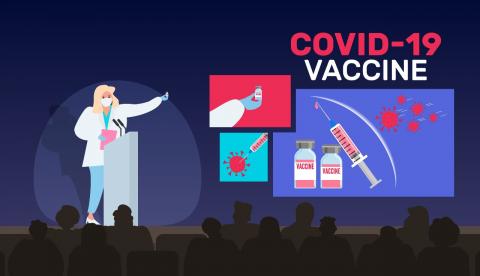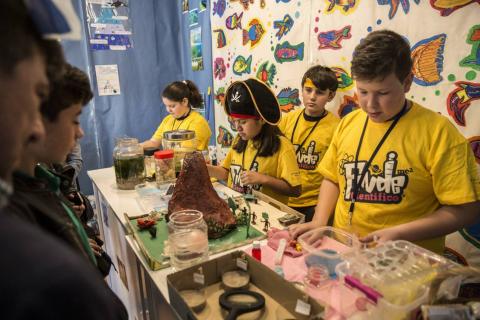A press release is not the same as a news article. A press release about a scientific result is produced and sent to the media by the source of the result itself —the institution of the research group that made the finding—. It is almost always written by journalists working for the institution issuing the report, and therefore, unlike journalistic articles, it is always reviewed by scientists before it is disseminated.
It usually just tells the story of the result, perhaps with some context. But the important point is that a press release is, by definition, biased information: it reflects the view of only one party, the authors of the finding. A news article, on the other hand, is produced from the view of a party not involved in the story itself. The journalistic article cites the press release as another source.
There is no absolute criterion that determines when a result should be reported in a press release or whether it will have repercussions in the media.
There are hugely important results for science and even for society at large that have never been reported in a press release, and vice versa.
How do you get media attention for your institution’s press release?
- Trust the communications professionals who will write the press release about your research. Often, they will ask you to summarise the results of your study and their implications; this summary is not the press release, but the raw material for them to work on. Facilitate their work: clarify doubts, talk to them personally, let them ask questions and give you advice. They are journalists who usually have specific training and previous experience in the media; and who know the keys to science communication.
- Assess the media interest of your result. Ask yourself who would be interested in knowing, perhaps not the result itself, but its implications. Family, friends, neighbours... The further away from your area of work the people you think would listen, the more interest a press release about your result may have.
- Briefly and clearly define the message you want to get across, using terms that your target audience can understand.
- Don't go into too much more detail than necessary to get the text right and to convey the significance and implications of what is being said.
- Don't be blunt if the result is not. Avoid telling the media something that you would not be able to make a strong case for in your community. Be clear about the limitations of the study and its scope. For example, don't be afraid to make it explicit that a result was obtained in mice or in cell culture.
- In other words, don't ‘oversell’. This is especially important in health topics, where there is a tendency to commit what is known in journalism as hype. And if you think that the headline or the approach of the press release, even if not untrue, could lead to misinterpretation, raise false expectations, or confuse the public, do not hesitate to discuss this with the communication officers who worked on the release. After all, when it is distributed to the media, it will be you who will have to explain these nuances to journalists who want to interview you.
- Be prepared to talk to the media. Once you have launched the press release about your research, the best thing that can happen is that journalists will be interested in it and want to talk to you, so for a few days you may have a lot of activity on your mobile phone and in your email. Congratulations if this happens. If you have questions about how to handle interviews, you can ask your school’s communications officers. We have also prepared a short guide on the subject.
- Speak to the layperson: try to explain the outcome in spoken language, as you would verbally tell someone who does not know. Anecdotes, emotional elements... can also be introduced.
- It will be more interesting if the result is accompanied by some human detail, narrative colour... hooks that the journalist can latch on to develop a story with a personal and unique angle for his or her readers. Even a press release about the proof of a mathematical theorem that, in principle, does not seem to affect people’s daily lives can be engaging.
- A good press release should be the embryo of what a skilled journalist can turn into a good story. What is a good story? Tim Radford, former science editor of The Guardian, identifies the following qualities in all of them: “...there will be something you can say in an opening sentence that will leave the audience urgently wanting to know more; it will arrive with an image – not necessarily a photograph, drawing or diagram; it could be just a vivid picture in the mind – that will evoke a sense of beauty, or comedy, or delight or horror; somewhere in the story there will be a scientist who will say something laconic, lurid or droll, but always quotable; and somewhere in it too will be a hinterland, an exciting story-so-far, and the promise of a next thrilling episode. Crime stories end when the perpetrator goes to prison. Good science stories tend to run and run.”
- Is this the right time to launch the news? This will be clear to your school’s communications officers. Afternoons are not good for sending out news, let alone on Fridays. Nor when there is other very powerful news in the same area of knowledge, or when the news is very saturated with other topics.




